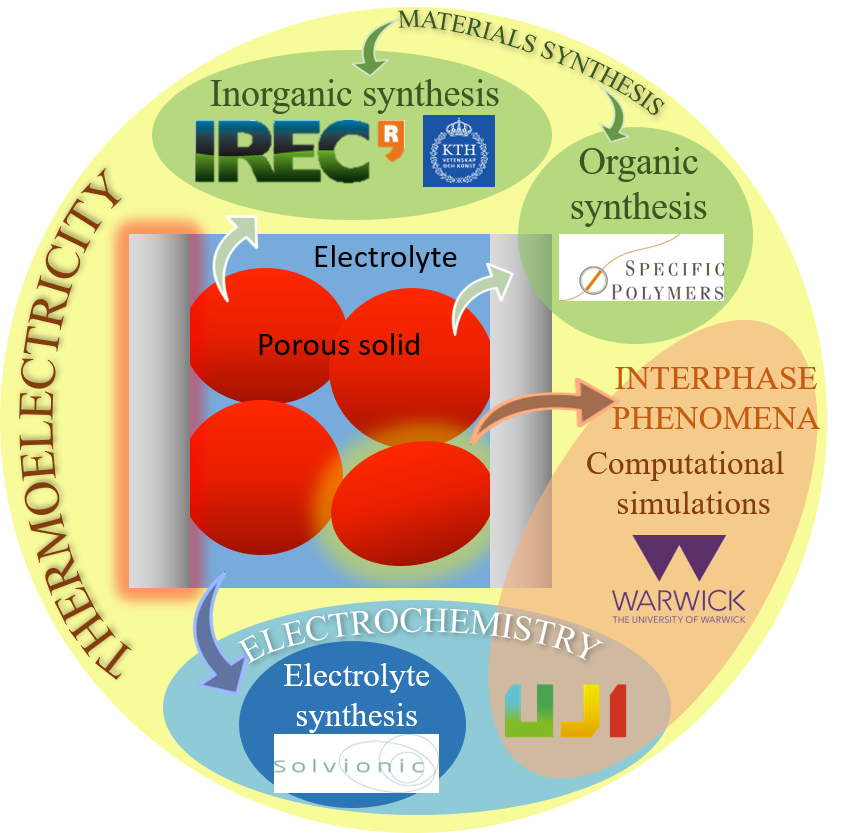Heat to generate electricity
More than 60% of the global power is lost as waste heat, which represents around 15 TW of power. A 10% recovery of this waste heat will exceed the summation of most current renewable energy sources (solar, wind, geothermal, and hydro energy). In addition to the waste heat, ubiquitous heat sources such as the sun or even our own bodies are widely available. Thermoelectric (TE) devices can directly convert heat into electricity under safe, clean, and environmentally friendly operation. They are solid-state devices with no moving parts, reliable operation, and requiring no maintenance.
The yet unsolvable problem of thermoelectricity
Despite large efforts to identify better TE materials, still, the TE technology is limited by low efficiency. One of the two performance improvement routes, thermal conductivity reduction, has already reached its (amorphous) limit, which makes the other route, power factor (PF) improvements, crucial. Current strategies targeting PF enhancement have only reached modest improvements, mainly due to the adverse interdependence of the Seebeck coefficient (S) and the electrical conductivity (σ), which produces a decrease in one of these properties if the other is increased. This is a serious obstacle to achieve the widespread application of the TE technology, since PF=σS2.
UncorrelaTEd concept
UncorrelaTEd will come true the dream of breaking the S-σ correlation by introducing a new paradigm in thermoelectricity that comes from the connection of thermoelectricity and electrochemistry, using a properly designed hybrid system, formed by a porous TE solid permeated by a liquid electrolyte. The porous solid provides a low thermal conductivity, whereas the electrolyte tactically interacts with the solid to enlarge the PF. Unprecedented PF improvements (above 35 times) have already been observed by UncorrelaTEd members in this system using a material with modest TE properties. UncorrelaTEd aims at extending these improvements to different materials (bismuth telluride alloys, oxides, and polymers) with state-of-the-art TE properties, potentially leading to an extraordinarily powerful technology able to provide more than 4 times larger PF than state-of-the-art low-mid temperature (<150 ºC) materials.

UncorrelaTEd impact
Due to the wide availability of low-grade heat, UncorrelaTEd results will be applied in many sectors. All machines from jet engines to microprocessors generate heat, as do manufacturing, domestic, and even biological processes. For example, the internet of things development, which will lead to a new concept of society (society 5.0) with unprecedented benefits, is currently seriously limited by the use of batteries. UncorrelaTEd technology will lead to self-powered sensors (e.g. body heat, industrial exhausts, environment), eliminating the need of batteries and their associated maintenance costs and harmful environmental impact. Textiles are another sector, where TE materials can be integrated to power devices such as implantable electronics and wireless monitoring systems for health care.
